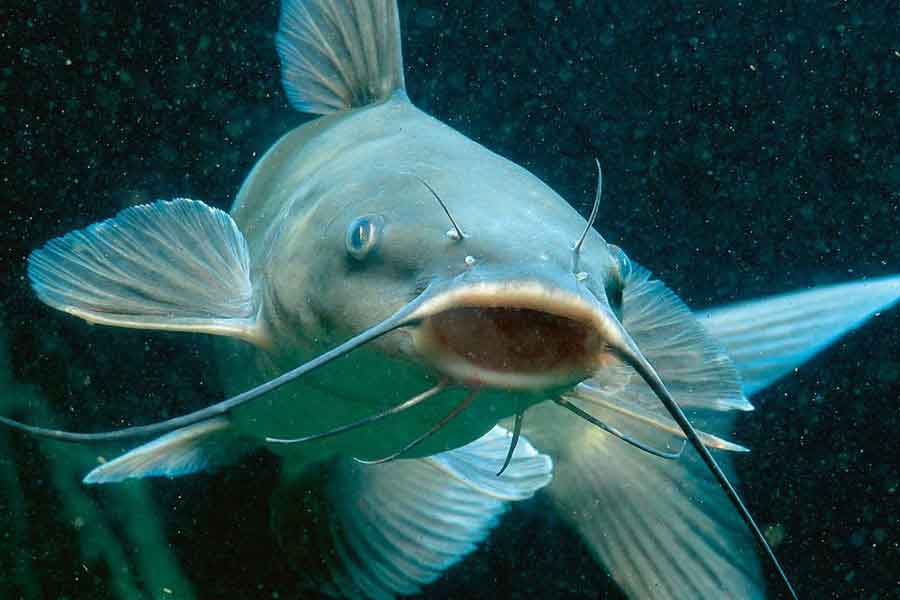
Sometimes, the best hiding place for an animal is within the herd. A zebra, a resident of the African savannah, doesn’t have many places to hide in the presence of a predator. Perhaps the only way for an individual to go unnoticed is within a group of individuals. Then the body transforms to favor blending in. The stripes blur the animal to completely confuse the hunter, preventing them from focusing on a single prey, an essential requirement for success.
Under the sea, things are not so different. Many animals choose the shoal as a defense mechanism. Catfish, like zebras, have striped bodies to confuse predators, but their elongated shape and swift, sinuous movements further accentuate that confusion.
The name «catfish» comes from the half-dozen barbels they have on their lower jaw, which allow them to sift through the sand at the bottom in search of food. The peculiarity of this shoal is that the individuals roam the bottom, feeding somewhat separated from each other, but in the face of aggression, they gather much more closely together than other fish aggregations.
Many predators may mistake this sinuous mass with uniform movement as a single animal, too large to attack. Others, knowing the trick, will charge directly into the middle of the group. Then, the catfish, in a swift movement, create a hole through which the hunter passes to the other side of the shoal without achieving success, confused by not obtaining any prey.
But those who succeed in the attack will immediately discover that catfish have several small, highly venomous spines in their fins. A sting from these spines can be extremely painful, but a combination of multiple spines applied to the same individual can be lethal. As one would expect, when catfish gather, they position all their spines outward, forming a kind of armor that repels any attack.
It’s notable that the catfish shoal only forms during the juvenile stage of their life; it is common to see adults wandering alone on the bottom in search of food. Perhaps the unity of individuals is only necessary during the juvenile stage, and upon reaching maturity, the individual learns to protect itself with the help of its venomous spines.
This presumption would be logical and reasonable. Juveniles of all species tend to be the most exposed and, therefore, the most vulnerable. In fact, among humans, we call our juveniles «adolescents,» and it is also normal to see them grouped in tribes, displaying remarkably similar attire. Perhaps they, too, require the herd to feel less vulnerable, taking refuge in the old saying that «unity is strength.» Perhaps.
«You cannot defend what you do not love, and you cannot love what you do not know.»

